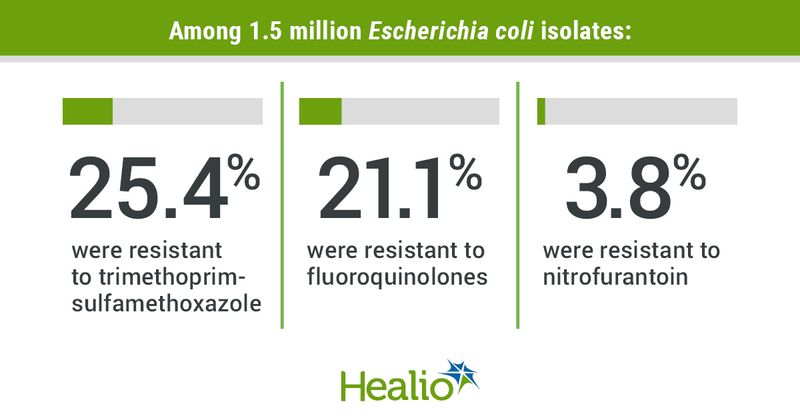Study finds ‘strikingly high’ antibiotic resistance among urine E. coli isolates in US
Click Here to Manage Email Alerts
There was a “strikingly high” level of antibiotic resistance among outpatient urine Escherichia coli isolates collected during a recent 9-year period in the United States, according to a study published in Clinical Infectious Diseases.
“These data demonstrate the high prevalence of nonsusceptible E. coli, with significant variation in resistance depending on geographic location within the U.S. for patients presenting to outpatient clinics with uncomplicated urinary tract infection,” Infectious Disease News Editorial Board Member Keith S. Kaye, MD, MPH, professor of internal medicine and director of research in the division of infectious diseases at the University of Michigan Medical School, told Healio.

“Awareness of local and regional rates of antimicrobial resistance and multidrug-resistant (MDR) E. coli may help inform empirical UTI prescribing for clinicians who treat outpatient urinary tract infections,” Kaye said. “The results from this study also highlight the need for appropriate antibiotic use and the need for novel oral agents active against resistant strains of E. coli.”

Kaye and colleagues evaluated 1,513,882 E. coli isolates collected from 2011 through 2019, examining their susceptibility to trimethoprim-sulfamethoxazole (TMP-SMX), fluoroquinolones and nitrofurantoin.
They found that the prevalence of E. coli isolates that were resistant to TMP-SMX, fluoroquinolones and nitrofurantoin was 25.4%, 21.1% and 3.8%, respectively. Through further modeling, they also observed “significant variation” in antibiotic resistance between different census regions (P < .001).
Kaye said that the study’s limitations included a lack of standardized susceptibility testing.
“While all laboratories in the U.S. endeavor to follow [Clinical & Laboratory Standards Institute] and American Society for Microbiology guidelines, susceptibility results were based on local laboratory practices and reporting, which means that there was potential for variation in reporting across study laboratories,” he said. “Nevertheless, the average clinician relies on their microbiology laboratory results to direct clinical decisions, and therefore, this assessment reflects real-world information that is used to guide therapy options.”
